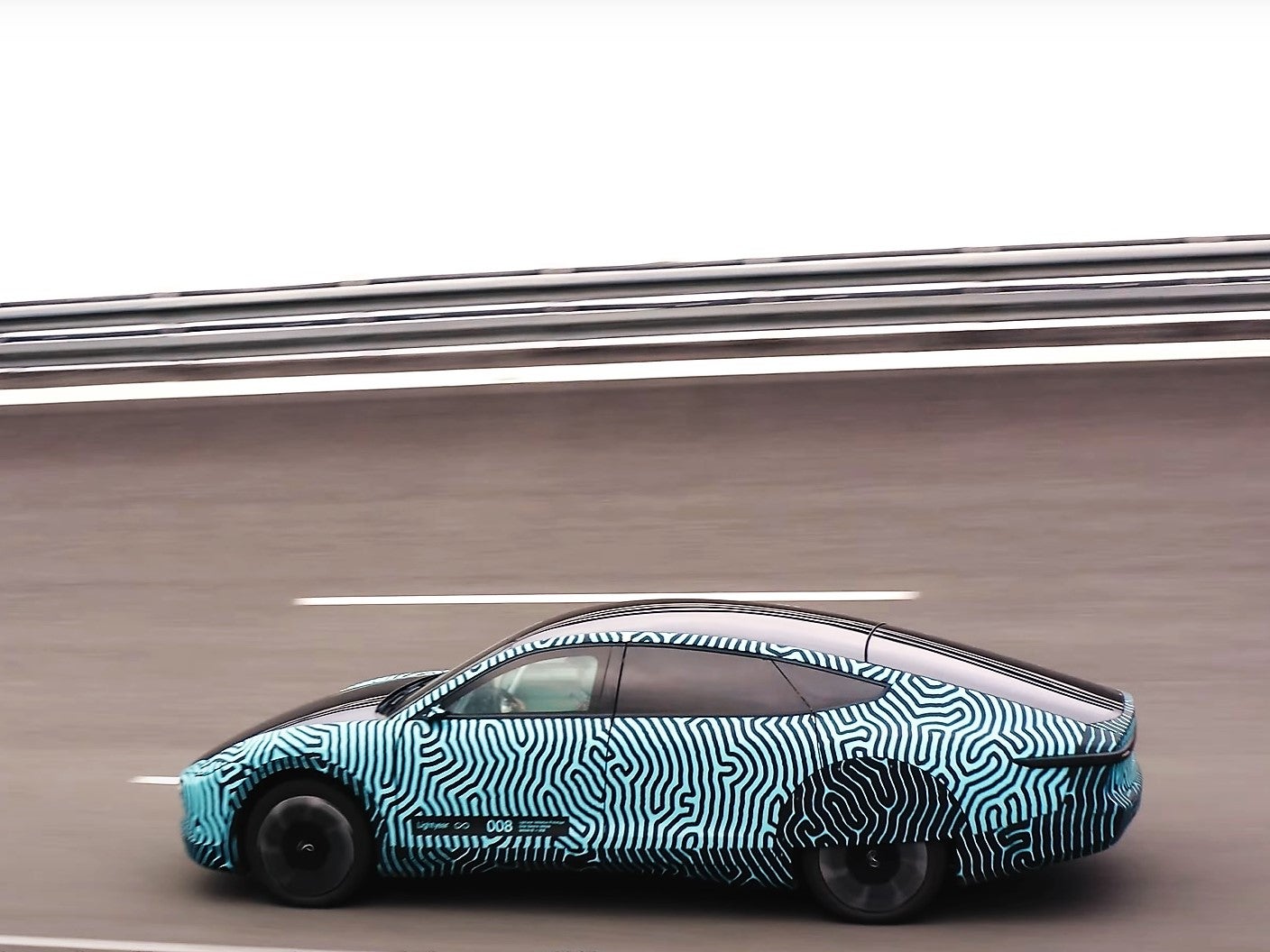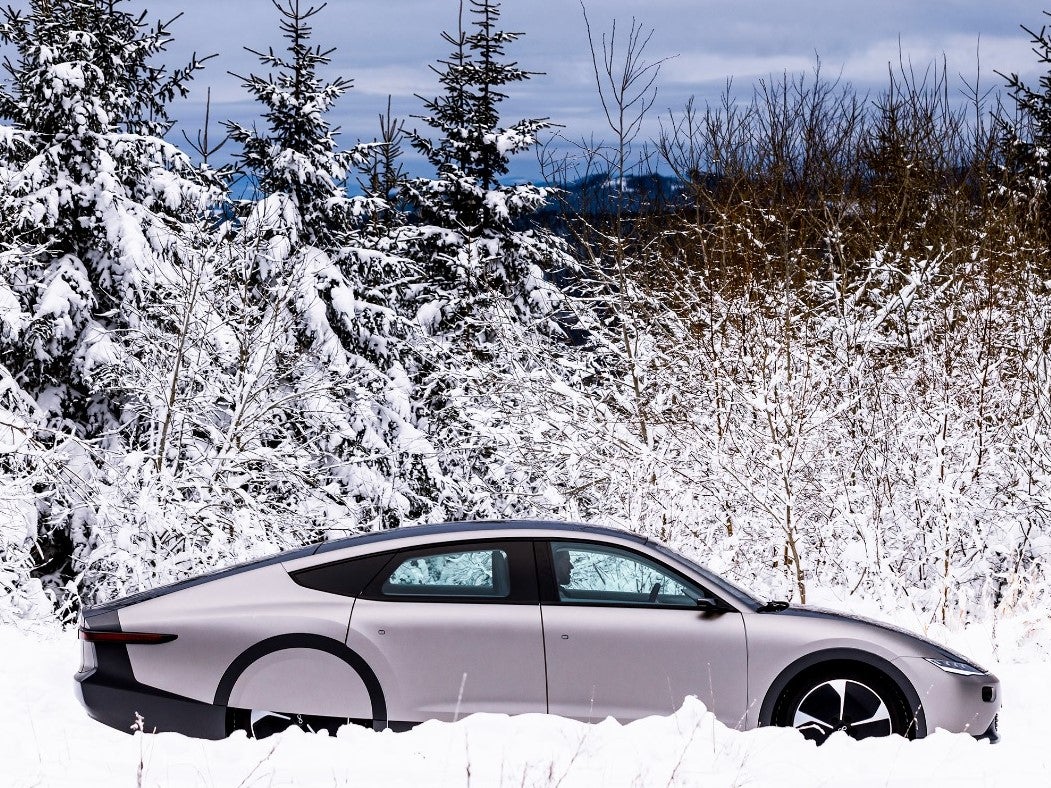Solar-powered car that can ‘drive for months without charging’ to hit roads this summer
Lightyear One costs €150,000 and aims to be on roads by mid-2022

A solar-powered car has travelled hundreds of kilometres on a single charge, marking a major milestone towards bringing the “world’s most efficient and sustainable” vehicle to the market.
The Lightyear One drove 400km (248 miles) at 130kph before needing to recharge during tests in the Italian town of Aprilia last month. Previous tests carried out at a lower speed saw the electric car travel more than 700km.
Lightyear claims its car will allow customers to “drive for months without charging”, and hopes to deliver the first vehicles to customers by mid 2022.
Reservations for the Lightyear One can already be made through the company’s website, requiring a €150,000 down payment.
“We have achieved an energy consumption of 141-watt hours per kilometre. What this means is that on one charge, you’d be able to drive for over 400km. For example, that ‘s from Amsterdam all the way to Luxembourg,” said Megan Parfitt, vehicle test coordinator at Lightyear.
“Comparing that to other vehicles on the market right now, that’s about one-and-a-half times further than a directly-comparable vehicle can do with the same battery size... It shows we’re well on our way to achieving our target of being the most efficient car on the market, not just in legislative cycles but also in real-world conditions that the customer will experience.”

Lightyear also carried out real-world aerodynamics tests in Aprilia, which the company claims produced record-breaking results.
“Our road tests confirm that we’re on track to producing the most aerodynamic five-seater to date,” the firm stated in a release posted to its website.
“As our world moves to more sustainable energy sources, Lightyear is driving the development of clean mobility in the automotive industry.”
The Lightyear One will not be the first commercial solar-powered car to make it to market, though it will be the first four-wheeled car capable of carrying more than one passenger.
California-based startup Aptera sold out its first batch of solar-powered cars within 24 hours of its launch in 2020.
Aptera’s Never Charge three-wheeled car boasts a range of up to 1,600km, however is only able to capture enough energy from the Sun to charge 6 kilometres per day in sunny conditions. It is more modestly-priced than the Lightyear One, at $26,000.
Join our commenting forum
Join thought-provoking conversations, follow other Independent readers and see their replies
Comments
Bookmark popover
Removed from bookmarks